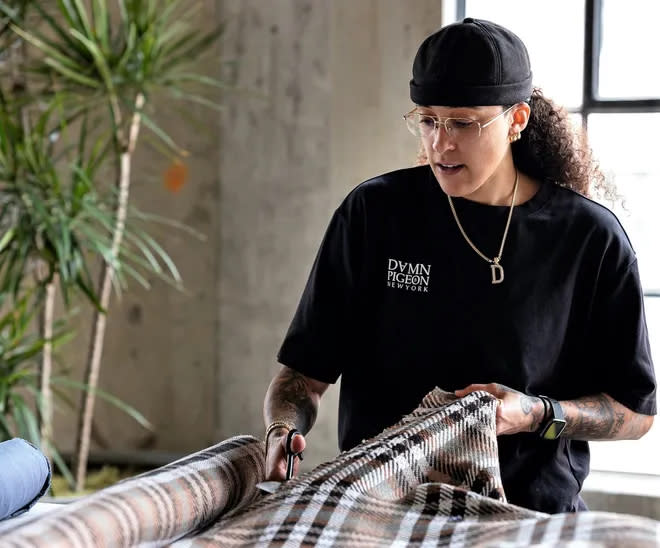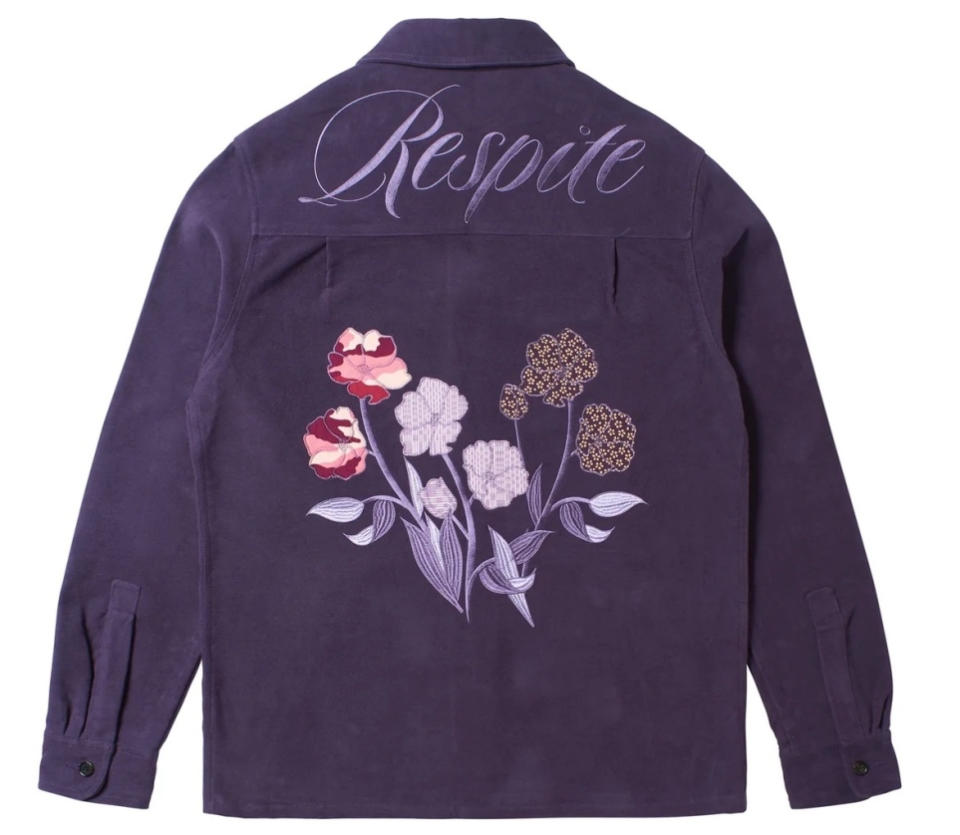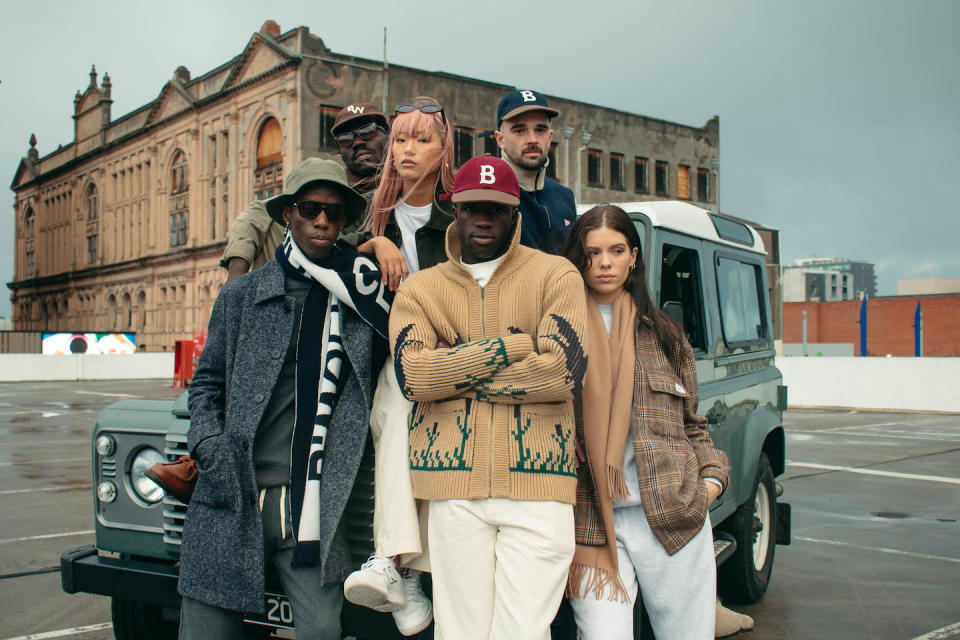Why eBay Reinvested in the $187 Billion Streetwear Market

Last week eBay announced it’s now authenticating streetwear fashion, applying its Authenticity Guarantee to in-demand brands such as Kith, Supreme, Bape, Fear of God, Off-White, Aimé Leon Dore, Palace, Vetements and Stone Island.
According to Garry Thaniel, eBay’s global GM of sneakers and streetwear, the platform “has pieces from nearly every notable streetwear drop that’s ever happened—whether in 1993 or 2023.” Adding streetwear to the purview of the experts staffing eBay’s “state-of-the-art” New Jersey authentication center, who scrutinize eligible $200-and-up items using high-tech equipment along with their highly trained eye, will give consumers the confidence to “buy and sell apparel in the same seamless way that they can sneakers,” Thaniel said.
More from Sourcing Journal
Levi's Collaborates with L.A. Streetwear Brand Born x Raised
EBay Steps Up Authentication Efforts with Certilogo Acquisition
Interest in the $187 billion streetwear market, according to Market Reports World’s study published this spring, shows little sign of slowing.
Ebay says people searched its platform for “streetwear” in April this year 100 percent more than they did 12 months earlier. Hoodies made by Palace, Stone Island and Fear of God Essentials were among last year’s most-queried streetwear items, it added, while 2022 saw consumers fire off 30 Supreme searches a minute.
Nearly two dozen additional streetwear brands will be on-boarded under eBay’s Authenticity Guarantee, which covers both new and pre-owned apparel, by September ahead of the high-volume holiday shopping season. These include high-heat labels such as Adidas, Alexander Wang, Balenciaga, Burberry, Cactus Plant Flea Market, Chrome Hearts, Comme des Garçons, Dior, Eric Emanuel, Fendi, Givenchy, Gucci, Jordan, Louis Vuitton, Nike, OVO, Palm Angels, Prada, Rhude, Versace, and Visvim.
The decision by eBay to invest in keeping its high-traffic platform free from counterfeits signals streetwear’s high-value role in fashion.
“The Hype” on HBO
Programming such as “The Hype,” an HBO show waiting to get the green light on a third season, indicates the consumer appetite for an inside look at what goes into making the next big covetable label.
“The more that people know about streetwear, the better the business is, and the better the industry is, the more understanding you have of what you’re actually purchasing and who created that,” Rob Eric, executive producer of “The Hype” and chief creative officer of Scout Productions, told Sourcing Journal.

“The Hype” created significant exposure for Elmira, New York-born, L.A.-based fashion designer Knoxx, who finished runner-up in season 2. Knoxx, who runs the DVMN Pigeon brand, tells Sourcing Journal that coming in second place might have been the best possible outcome because she’s gained a following of fans who believe the creator of “elevated high street wear” was robbed of taking home the top prize.
For Eric, streetwear might be just entering its prime, in part because the styles that made the genre back in the 1980s and early ‘90s were heavily influenced by MTV.
“If you follow a lot of fashion, you see how interesting the street is now in terms of styling, what people are wearing, what people care about,” Eric said. “With the way they’re bringing back vintage streetwear and reappropriating it and fixing it and doing it their way, I think we’re headed into the heyday of streetwear.”
If Eric is right, streetwear could benefit from the larger push toward sustainability in fashion.
“I hate to throw anything away. I’m like, I can make a pair of jeans out of this, or a new hoodie just mixing five thrifted hoodies together,” Knoxx, born Brittney Brooks, said. “I do believe that the more we’re getting creative, the more sustainability enters the equation because that’s how people learn. I don’t know anybody who got into fashion that didn’t say thrift was a precursor… We all started at the thrift store.”
Eric wants season three of “The Hype”, if it comes to fruition, to hammer home streetwear’s global relevance.
“It’s certainly not just America that streetwear is at, streetwear is everywhere,” Eric said. “There’s a lot of great Japanese streetwear, a lot of Korean streetwear that’s amazing; the UK, France—it’s just getting bigger and bigger, so I’d love to have an international component to the show.”
Kazuki Workshop
Sustainability was top of mind when Kazuki Kozuru-Salifoska decided to a create her namesake label, Kazuki Workshop, for which she serves as founder and creative director.
The new brand couples her appreciation for “gender-neutral fashion” with the expertise in fit and size inclusivity she gained during a career spent in the industry. Tops ($325) and bottoms ($375) are designed for “male-identifying” and “female-identifying” bodies in a departure from conventional sizing systems.

“Having worked in fashion for over 25 years, I’ve become acutely aware of the industry’s impact on the environment,” the designer told Sourcing Journal of the “multifaceted” sustainability issue that covers everything from fabrication to labor to manufacturing and production. “I think overall, the streetwear category appeals to a younger generation—the millennials and Gen Zs who are much more conscious and mindful of the social and environmental impact of fashion.”
That’s why Kazuki chose a sustainable viscose fabric spun from certified renewable wood sources for the streetwear label’s knitwear pieces, produced on demand in New York City.
“There’s a local factory in Brooklyn, Tailored Industry, that I’m using for my knitwear and my woven pieces will be manufactured in Midtown NYC,” she said. “Both factories produce on demand, which helps limit overproduction, supports the local garment industry workers, pays fair wages, and lessens emissions from shipping overseas. I feel that nowadays, any and all fashion brands need to take steps towards being more mindful of their resources, materials, and impact on the environment.”
No One
Streetwear’s popularity is also luring old heads back into the game.

Jameel Saleem and childhood friend Lenard Grier are back in business 10 years after they launched a streetwear label that didn’t last long, mostly because Grier found he could make more money in finance and Saleem in TV writing for programs including “Bob’s Burgers,” the show that landed him an Emmy nomination.
At the heart of their No One streetwear line is workwear, woven in the thick cotton tradition of Dickies and Carhartt’s, that Grier has come to redefine more inclusively as “heritage-style men’s wear.”
“We basically want to blend this utilitarianism and self-individualism, so you want a garment that will be able to live and grow and be just as firm and strong in quality that it could be with you forever,” Grier said. “That allows you to connect with the brand and also to create your own story with that garment.”
No One’s “Respite” overshirt drives that look home, constructed with moleskin fabric sourced from England’s Brisbane Moss mill with embroidered flowers on the back. The buffalo-horn buttons are ethically sourced—meaning the animal was primarily used for food—and the $410 garment is sewn in Los Angeles.
Grier said the fall line will shift to a “militaristic kind of vibe” with camouflage shorts, a bucket hat, an Anorak hoodie and heavier overshirts.
Brotherwolf Down Under
Over in Australia, Padraig Whelehan used Covid disruption as a springboard to turn the grassroots T-shirt that grew up out of his Brotherwolf barbershop into a bona fide designer streetwear business bearing the same animal-inspired name.
“I’ve always had a love for vintage clothing, vintage razors, old military stuff, and I love contemporary fashion, too,” Whelehan said. “I kind of just took inspiration from everything around me and kind of just mashed it all together.”
Three months ago he broke into the European and U.S. e-commerce markets, where shoppers might appreciate the scarves and sweaters common to the Brotherwolf line.
“I love weight, but I probably went too heavy for Australia with my knitwear and stuff, but definitely good for the U.S. and Europe, for sure,” said Whelehan, who names Ralph Lauren as his greatest fashion inspiration. “Melbourne streetwear, I would say, is a mix of like UK and U.S.”

T-shirts start at $90, caps at $75, khakis start at $275, scarves at $240 and the most expensive Brotherwolf item is a rugby shirt priced at $425.
Whelehan says Brotherwolf mostly sources wool, cotton, herringbone and denim from countries including Turkey and Portugal, with Australia and Asia contributing a residual amount.
“Originally the plan was to try and make everything locally but it was just so expensive that we couldn’t make it work, unfortunately,” he said. “There was some stuff I could pull off but getting into the cut and sew, different designs and intricate stuff, I had to go overseas.”
Delivery is free in Australia on orders over $100, but shipping to the U.S., Canada, the UK and the Republic of Ireland incurs a $50 flat fee. Returns require the garments not to have been “worn, washed or altered” include proof of purchase receipt with tags intact and sent within 30 days of purchase. Only then is it reviewed for return eligibility by staff in Sunshine, Victoria.
Whelehan hopes to work around some of those geographic and logistic challenges by getting into retail stores.
“We obviously want to grow online but we’re also growing wholesale, so we’re kind of hitting up independent stores, but also, you know, we wouldn’t say ‘no’ to some of the bigger boys if they came along,” said Whelehan, who pointed out that Brotherwolf is stocked in 10 brick-and-mortar shops, including David Jones, one of Australia’s largest men’s wear retailers. “To be honest, looking at the Australian market, it’s actually quite small on a global scale.
“It’s not like there’s that many more stores that I would love to be in,” he said. “There’s probably only another handful of stores that I’d be really eager to get.”

